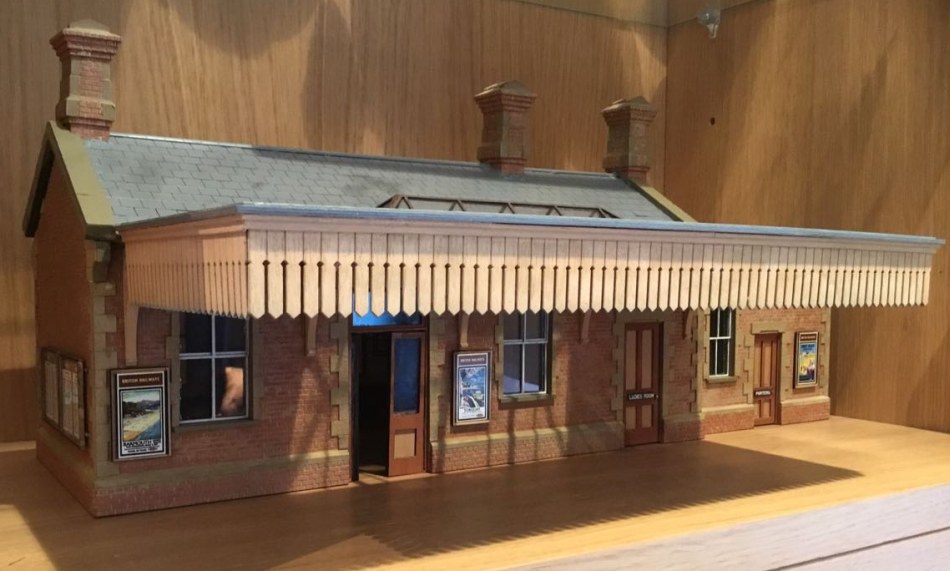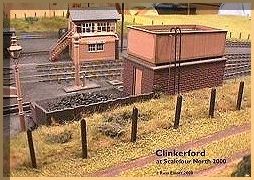| Section Page | Previous Page | Next Page |
GWR building and structure colours
Martyn Strudwick's 7mm station building for his Church Norton layout, based on the William Clarke design at Dymock.
There are differing views about the history of building liveries – this page offers one view, and the "Additional Reading" link below offers a slightly different alternative. Other possibilities are being discussed and investigated, and this page will be updated if and when a consensus view emerges.
Basic colours Both the memory and perception of the public is that the GWR was a 'brown and cream' railway. Whilst this was generally true after WWI for passenger rolling stock, it was not true for structures. The notion of a 'brown and cream' railway probably arose from the fact that British Railways (Western Region) painted structures thus from 1949 until the mid-1960s. GWR No. 1 "Cream" was used as undercoat (not visible). GWR No. 2 "Light stone" was used on woodwork on awnings, including underside of awning or roof, but excluding mouldings on outside of awning edge. GWR No. 3: "Dark stone" was used on Columns, roof girders,trusses ad ironwork, roof lights, window frames and associated woodwork, gutters, fallpipes, and panels attached to valences or end of awning or roof. Maroon-brown was used for gutters and fallpipes of other station structures (eg lamprooms, weighbridges). After 1931, there was a tendency to use the maroon brown more widely, instead of No. 3.
Colour swatches for light and dark stone Structure colours were usually mixed by building subcontractors, and although colour reference plates were used, some variation in the colours would be expected. Colour values in rgb and hex are given, but should be regarded only as a guide.
Specific buildings Timber stations had external walls, door panels and barge boards in No. 2. Other frames of building, doorframes window frames, mullions, window cills, gutters and down pipes in No. 3. Window sashes and glass framing was white.
Other details The general rule was that raised framing of any kind was finished in No.3 and panelling (including falsework) was in No. 2.
Historical note In an article in the October 1904 Railway Magazine on railway colour schemes, it is stated: "The Great Western Railway is very fond of light blue for the interior walls of stations, though lately it has improved on this by light green.". It should be noted however that some descriptions contained in the Railway Magazine can be somewhat anecdotal and are not always particularly reliable.
Sources:
Further reading: |
| Section Page | Previous Page | Next Page |


